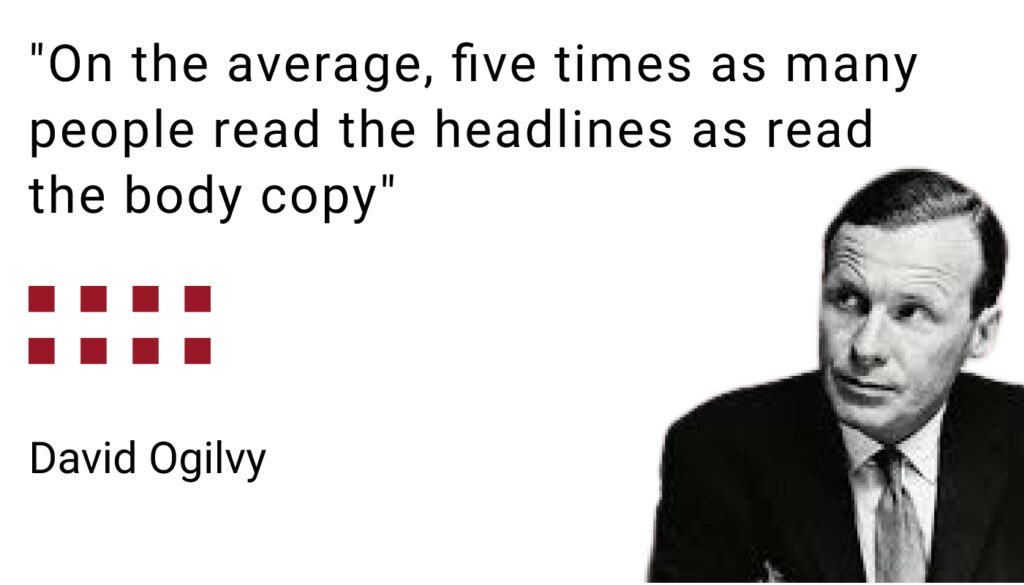Your cart is currently empty!

Unleash the Power of Split Testing – Elevate Your Marketing
Reading Time: 11 minutesAuthor:
Split Testing – Introduction
In the fast-paced world of marketing, staying ahead of the competition is crucial. But it’s a lot like outrunning a bear. You don’t need to be faster than the bear. You need to be faster than the guy next to you.
One way to achieve that competitive edge is by leveraging the power of split testing. This article will explore how split testing can lift your marketing strategies above the other guy and elevate your business to new heights.
Understanding Split Testing
What is Split Testing?
Split testing, also known as A/B testing, compares two or more versions of a marketing element to determine which one performs better. When you run split tests, you expose marketing element variations to different groups. This lets you scientifically measure the impact of each variation on desired outcomes.
Why is split testing Important in Marketing
Split testing is crucial for marketing success because it allows you to make data-driven decisions rather than relying on assumptions or guesswork. It provides valuable insights into what resonates with prospects and, therefore, what motivates your audience, enabling you to improve your baseline conversion rate.
How Split Testing Works
Split testing involves dividing your audience randomly into different segments and exposing each segment to a specific variation of a marketing element. By tracking and comparing the conversion rate of each variation, you can determine which one generates the desired results.
Common Misconceptions About Split Testing
There are some misconceptions surrounding split testing that need to be addressed. One common misconception is that split testing is time-consuming and complicated. While split testing requires some planning and effort to execute, the benefits far outweigh the effort involved. Your gut isn’t always right.
Split Testing Methodology – Setting Up Effective A/B Testing
“Projects don’t fail at the end, they fail at the beginning.”
~ project management axiom
To run A/B split tests, you must follow a systematic approach to ensure accurate results and meaningful insights.
Defining Clear Goals and Objectives
Before starting a split test, defining clear goals and objectives is essential. What specific outcome are you trying to improve? Whether it’s increasing search engine optimization conversion, ad campaign conversion rates, or some other key metric, having a clear objective will help you set up an effective split test.
Identifying Key Metrics
You need to identify key performance metrics to measure the impact of your split tests. These metrics will vary depending on your goals and objectives. For example, if your goal is to improve conversion rates, you might track the number of completed purchases or sign-ups.
Selecting Variables to Test

Choose the marketing elements you want to test. This could include headlines, call-to-action buttons, images, email subject lines, or ad copy.
When selecting variables, be sure you are measuring big things. Test campaign elements that matter. Blue versus green doesn’t matter—conversion rate optimization matters.
Focus on elements that have a significant impact on your desired outcomes.
Creating Test Variations
Once you’ve identified the variables, create different variations for each element. Ensure that each variation is distinct enough to generate meaningful results. For example, if you’re testing headlines, create variations that convey different messages or evoke different emotions.
Designing Compelling Experiments
Crafting compelling experiments is crucial for obtaining accurate and actionable insights from your split tests.
Crafting Impactful Hypotheses
Before conducting a split test, formulate hypotheses based on your goals and objectives. What do you expect to happen? For example, if you’re testing email subject lines, your hypothesis might be that a personalized subject line will result in higher open rates.
A/B Testing vs. Multivariate Testing
A/B testing involves comparing two variations of a single element, while multivariate testing allows you to test multiple variations simultaneously across multiple elements. Consider which approach aligns best with your goals and resources.
A/B split testing is easier to execute because you assess only one element. Unless you are or have access to a mathematician with experience setting up and analyzing multivariate tests, you should probably stick with a simple A/B test.
Determining Sample Sizes and Statistical Significance
To ensure statistical significance, determine the appropriate sample sizes for your split tests. This will help you gather enough data to draw meaningful conclusions. To learn more about the importance of having statistically significant sample sizes read our post, Measuring Statistical Significance and Why It’s Important to Marketers. You can find a sample size calculator or statistical calculator, or other split testing tools online to assist you in this process, including our statistical significance calculator.
Implementing Randomized Control Groups
To eliminate bias and external factors that may influence results, implement randomized control groups. These groups receive a control version that represents the baseline, basically the current solution, allowing you to compare the performance of the variations against it. Randomly assign your audience segments to the control and test groups to ensure an unbiased comparison.
Testing Landing Pages for Optimal Conversion Rates
Split testing landing pages is crucial for conversion rate optimization. By conducting split tests on various elements, you can identify the most effective strategies to capture your audience’s attention and encourage action.
If you are considering your first split test, the landing page should be at the top of your list. In the past, I’ve run split tests focussed solely on landing page optimization and saw improvements of up to 60% compared to the control.
Elements to Test on a Landing Page
When testing landing pages, focus on big things. Focus on the elements that impact the conversion rate most.
“It’s the offer stupid.”
~ Direct Marketing axiom
This includes offers, headlines, subheads, call-to-action buttons (the words used and the colors), images and videos, other visuals, and forms. Each of these components plays a crucial role in capturing your visitors’ interest and guiding them toward the solution they seek and your desired conversion goal.
Testing Offers
Offer testing is key. The offer has more impact on conversion than any other element. When testing elements on a landing page start with the offer.
Determine which value proposition or incentive resonates best with your target audience. By experimenting with different offers, such as free trials, exclusive discounts, or compelling content downloads, you can identify the most persuasive and enticing proposition that compels visitors to take the desired action.
Offer testing allows you to fine-tune your messaging and align it with your audience’s specific needs and desires, ultimately optimizing your landing page conversion rate and boosting your overall marketing success.
Headlines and Subheads

Test different variations of headlines and subheadings to see which ones resonate most with your audience. Experiment with different copy frameworks, tones, messaging styles, and value propositions. A web page with a compelling headline will capture attention and entice visitors to explore further. Remember, you have six seconds or less to engage incoming traffic.
Call-to-Action Buttons
Your call-to-action buttons’ design, color, text, and placement can significantly impact conversion rates. Test variations of these elements to determine which combination generates the highest click-through and conversion rates. The location and the text are the two most important factors. Color is also key.
Images and Visuals

“Pictures tell, copy sells.”
~ Direct Marketing axiom
Visual content plays a powerful role in capturing attention and conveying your message effectively. Select images that support the messaging and direct visitors. For example, a model looking out pulls attention to the model. A model looking over at the headline causes visitors to look where the model is looking.
Test different images, graphics, videos, or animations to identify the visuals that resonate best with your target audience.
Forms
Test different versions of form layout, length, and fields. Each of these can greatly influence the form completion rate. Only ask for information you need and will use. The less you ask, the more likely a form will boost conversions. After the offer, CTA and headline, form design will have the most impact on the landing page conversion rate.
Optimizing Email Campaigns Through A/B Split Testing
Email marketing is a powerful tool for engaging with your audience and building trust. You can optimize your email campaigns by utilizing split testing to improve open rates, click-through rates, and overall engagement.
Subject Lines and Preview Text
The subject line is the first impression your email makes on recipients. Test different versions of the subject line and preview text to determine which ones generate higher open rates. Consider personalization, emojis, length, tone, and urgency to captivate your audience’s attention.
Email Copy and Content Variations
Experiment with different email copy and content formats to identify what resonates best with your subscribers. Test variations in tone, messaging, storytelling, and content length. Pay attention to your emails’ structure, formatting, and visual appeal.
Personalization and Segmentation Strategies
Segmentation and personalization can significantly enhance email engagement. Test different segmentation strategies based on demographics, interests, or past behavior. Personalize your emails with dynamic content that addresses each segment’s specific needs and interests.
Timing and Frequency of Email Sends
Timing plays a crucial role in email campaign success. Test different send times and days of the week to determine when your audience is most receptive. Additionally, experiment with the frequency of your email sends to find the optimal balance between staying top-of-mind and avoiding email fatigue.
Enhancing Ad Performance with Split Testing
Advertising is a key component of any marketing strategy. It’s most often used to drive traffic to a website or landing page. Split testing your ad campaigns allows you to refine your messaging, visuals, targeting, and bidding strategies to maximize ad performance and return on investment. When money is being spent, multiple tests will ensure that your budget isn’t being wasted.
Testing Ad Copy and Messaging
Crafting compelling ad copy is essential to grab attention and drive action. Test different variations of ad headlines, descriptions, and ‘calls to action’ to identify the messages that resonate most with your target audience. Experiment with different offers, tones, and value propositions to find the winning combination.
Experimenting with Different Visuals and Ad Formats
Visual elements in ads can significantly impact their effectiveness. When your audience visits web pages, it’s the visual that stops the scroll.
Test different visuals, including images, videos, carousels, or interactive formats, to determine which ones generate higher engagement and click-through rates. Consider using vibrant colors, eye-catching graphics, and compelling imagery that aligns with your brand and captures your audience’s attention.
Targeting and Audience Segmentation Tests
“Get the right message to the right customer at the right time.”
~ Direct Marketing axiom
To optimize your ad campaigns, test different targeting parameters and audience segments. Experiment with demographics, interests, behaviors, and geographic locations to identify the most responsive audience segments. Split testing software will help refine your targeting based on the performance data to reach the right people with your ads.
Bid Strategies and Optimization Techniques
Bid strategies can greatly impact the visibility and cost-effectiveness of your ads. Test different bidding strategies, such as manual bidding, automated bidding, or bid adjustments, to find the optimal balance between ad placement and budget allocation. Monitor the performance metrics closely and adjust your bidding strategies accordingly.
Analyzing and Interpreting A/B Test Results
Analyzing and interpreting the results of your split tests is crucial for extracting meaningful insights and driving data-informed decisions.
Collecting and Analyzing Data
Ensure that you have a robust data collection mechanism in place to collect data that’s accurate and relevant throughout your split testing process. Use split testing tools and platforms to track and measure the performance metrics of the data collected.
Interpreting Statistical Significance
As mentioned above, evaluate your split test results for significance to determine the validity and reliability of the findings. Use a split-testing tool to compare the performance of different variations and a calculator to assess statistically significant differences. If the shift isn’t statistically significant, it’s quantitative data and should be used as such.
Identifying Winning Variations
Based on the analysis of your split test results, identify the winning variations that outperformed others in achieving your goals.
Drawing Actionable Insights
Extract actionable insights from your split test results that will improve your marketing strategies and tactics. Identify trends, patterns, and customer preferences that emerged from the data. Use these insights to refine your marketing campaigns and enhance overall performance.
Implementing Successful Split Test Strategies
“Don’t test what you can’t afford to roll out.”
~ Direct Marketing axiom
Implementing successful split test strategies involves continuous optimization and integration of the findings into your marketing practices. Roll out the winners slowly. Run a confirmation test to be sure you are backing a true winner.
Scaling Successful Variations Across Campaigns
Once you have identified winning variations, implement them across your marketing campaigns. Apply the insights from split testing to optimize marketing mix elements, such as landing pages, email templates, and ad creatives.
Iterative Testing and Continuous Optimization
Split testing is an ongoing process. Continuously test new variations and ideas to refine your marketing strategies further. Embrace an iterative approach, where each split test builds upon the previous findings, allowing you to fine-tune your marketing efforts continuously.
Documentation and Knowledge Sharing
Document the results and insights from your split testing experiments. Create a repository of best practices, case studies, and learnings. Share this knowledge with your marketing team to foster a culture of data-driven decision-making and continuous improvement.
Collaboration and Communication Within Marketing Teams
Effective collaboration and communication are vital for successful split testing. Encourage cross-functional collaboration between marketing team members, data analysts, and designers to leverage diverse expertise and insights. Regularly communicate the findings and results to ensure alignment and shared learnings.
Case Studies and Success Stories
I once worked with the folks at Wells Fargo. They wanted to improve the conversation rates for HELOC direct mail. The HELOC loan sector is highly competitive and also very profitable for our client.
Our hypothesis was that there are different attitudes toward debt that can be identified using data modeling and used to improve direct mail offer messaging.
Our proposed solution was to develop direct mail packages for each of the attitudinal groups.
The key metric was more conversions using this approach
Our data folks developed predictive models that segmented the audience into attitudinal segments. Each segment was split, and we sent half the control package and half the new creative designed to appeal to the audience’s attitudes toward debt. The offer was the same for all cells.
Every test cell package delivered more conversions. The improvements compared to the control ranged from over 100% to over 200%.
Best Practices and Tips for Effective Split Testing
To maximize the impact of your split testing efforts, follow these best practices and avoid common pitfalls.
Dos and Don’ts of Split Testing

Do set clear goals and objectives before conducting split tests.
Do assess the statistical significance of results given your sample sizes.
Do run multiple tests.
Don’t make decisions based on assumptions.
Don’t rely on qualitative feedback; let data drive decisions.
Don’t rely on a single split test result; roll out successes slowly and consider the long-term trends.
Avoiding Common Split Testing Pitfalls
Avoid testing too many variables simultaneously, as it can lead to confusion and inconclusive results.
Avoid testing what you can’t afford to roll out.
Avoid biases in your test setup by implementing randomized control groups.
Avoid prematurely stopping tests based on early results; gather sufficient data for accurate conclusions.
Tools and Resources for Successful Split Testing
Use split testing tools and resources available to streamline and enhance your split testing process:
- A/B split testing software: Use a split-testing tool or split-testing software platform that provides intuitive interfaces for setting up and managing split tests.
- Analytics tools: Leverage analytics platforms to accurately track and measure your variations’ performance metrics.
- Heatmap and user behavior tools: Monitor website traffic to gain insights into user behavior and engagement through heatmaps, click tracking, and session recordings.
- Statistical calculators: Utilize statistical sample size calculators and significance testing tools to determine sample sizes and test for statistical significance.
Staying Updated with Industry Trends and Advancements
Stay informed about the latest trends and advancements in split testing methodologies. Attend industry conferences, read blogs, and engage in discussions with marketing professionals to expand your knowledge and stay ahead of the curve.
Split Testing – Be Faster Than the Other Guy
Split testing is a game-changer for marketers seeking to elevate their strategies and achieve reliable results. By making the effort to objectively test two versions of key marketing elements for conversion optimization, your budget will have more impact.
By adopting a data-driven approach, and setting clear goals and key metrics when conducting systematic split tests, you can optimize various marketing elements to drive better conversions, engagement, and overall campaign success.
Don’t underestimate the power of split testing in gaining valuable insights into your audience’s preferences and behaviors. Embrace this powerful technique, learn from successful case studies, and continuously iterate and optimize your marketing efforts.
Now is the time to unleash the power of split testing and revolutionize your marketing strategies. Embrace the data, make informed decisions, and watch your marketing soar to new heights. Take action today and start implementing split testing in your marketing strategies to unlock untapped potential and achieve marketing success like never before.
Related Posts
-
Use Split Testing to Elevate Your Marketing
Unleash the power of split testing and revolutionize your marketing strategies.
-
Statistical Significance
Measure A/B tests for statistical significance – improve your marketing.
-
Testing – 7 things to know
Ad Campaign testing is important for more effective marketing. We’ve put together 7 things you need to know.
Author: James Hipkin
Since 2010, James Hipkin has built his clients’ businesses with digital marketing. Today, James is passionate about websites and helping the rest of us understand online marketing. His customers value his jargon-free, common-sense approach. “James explains the ins and outs of digital marketing in ways that make sense.”
Use this link to book a meeting time with James.

